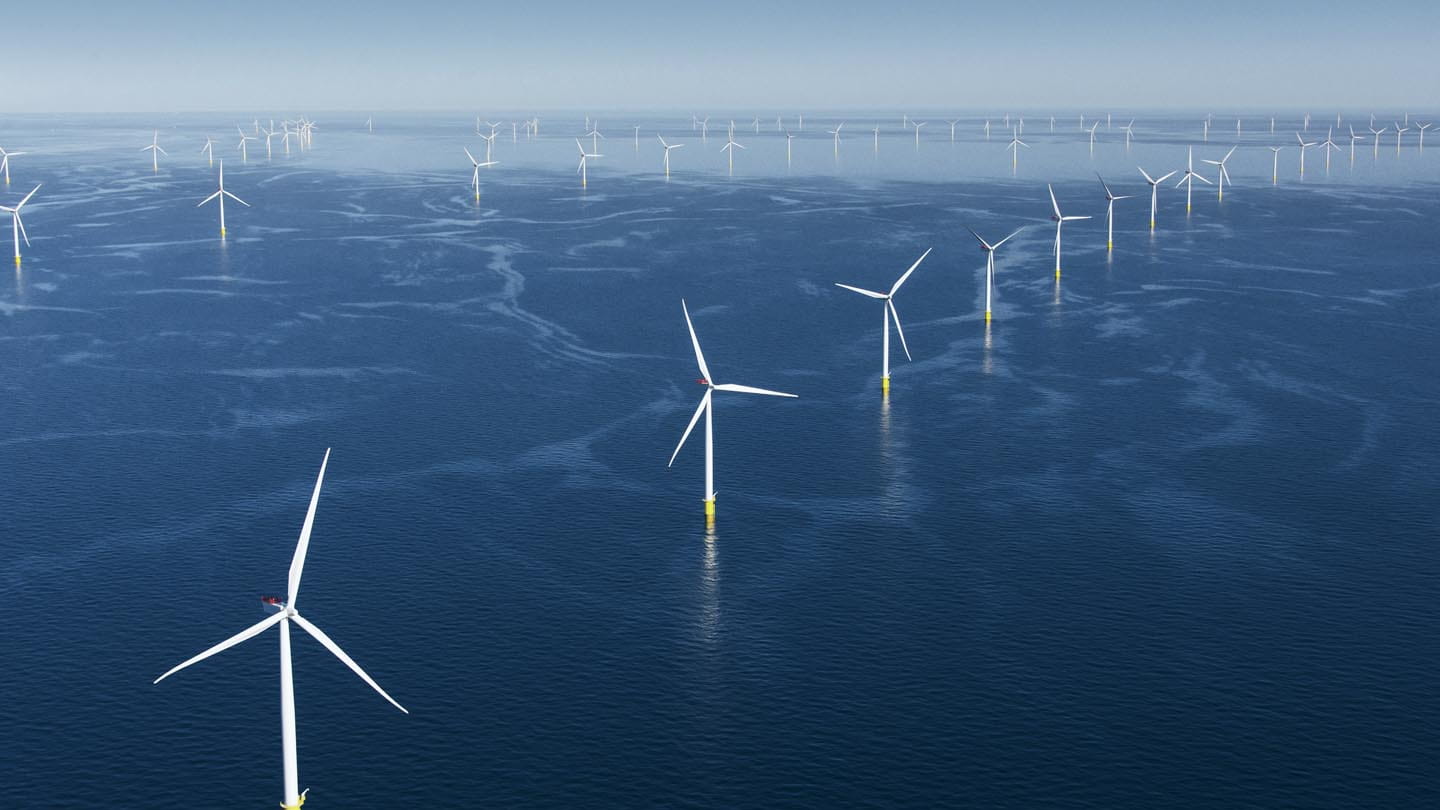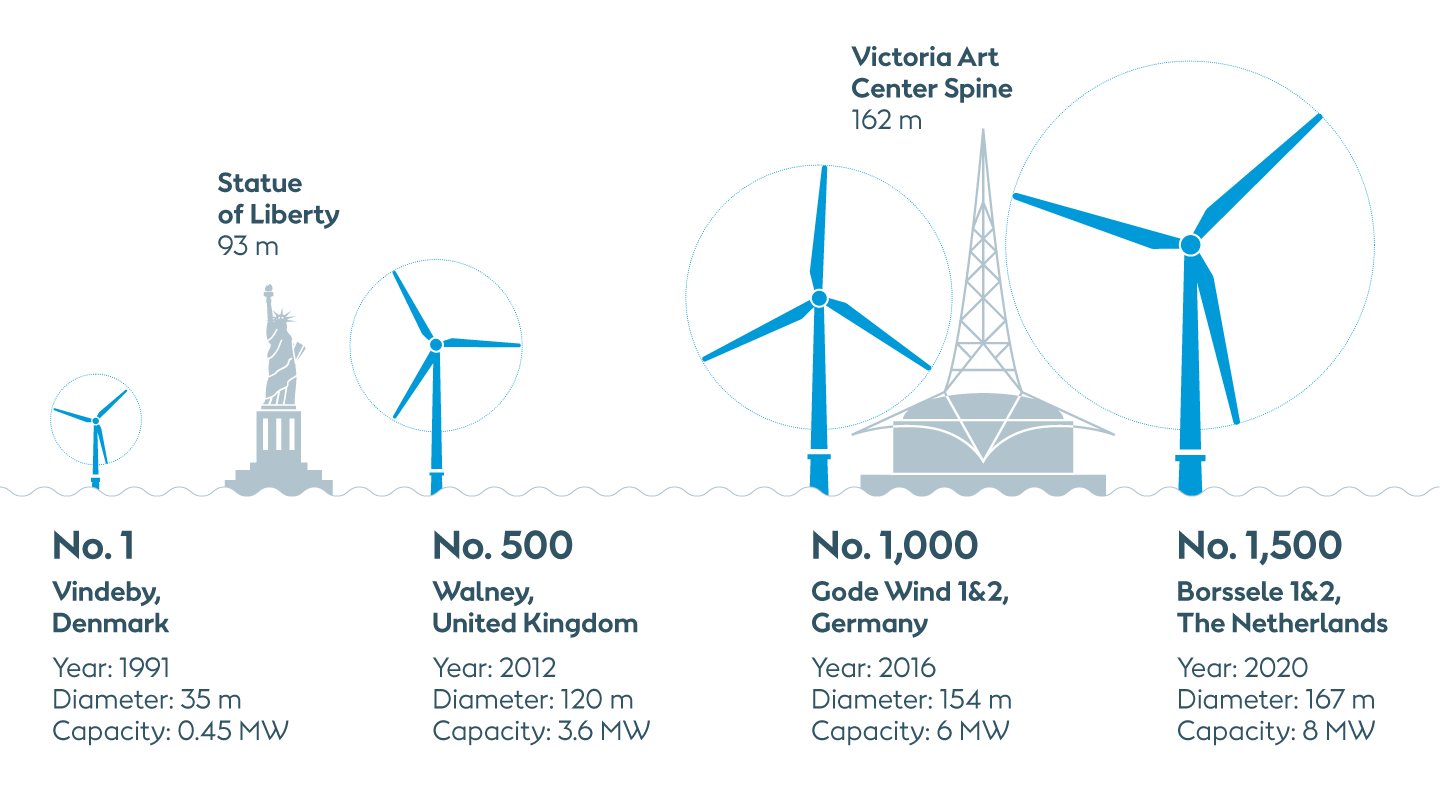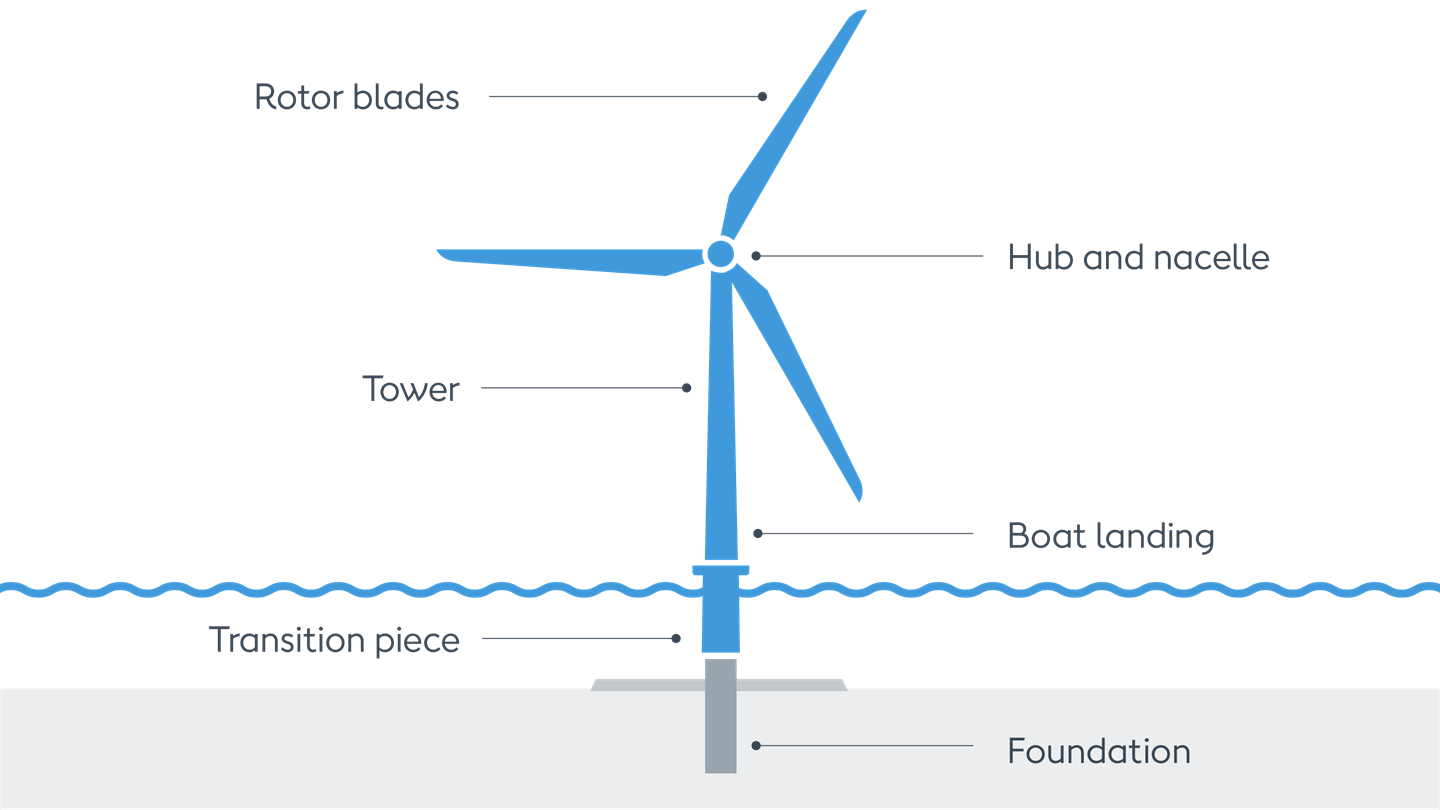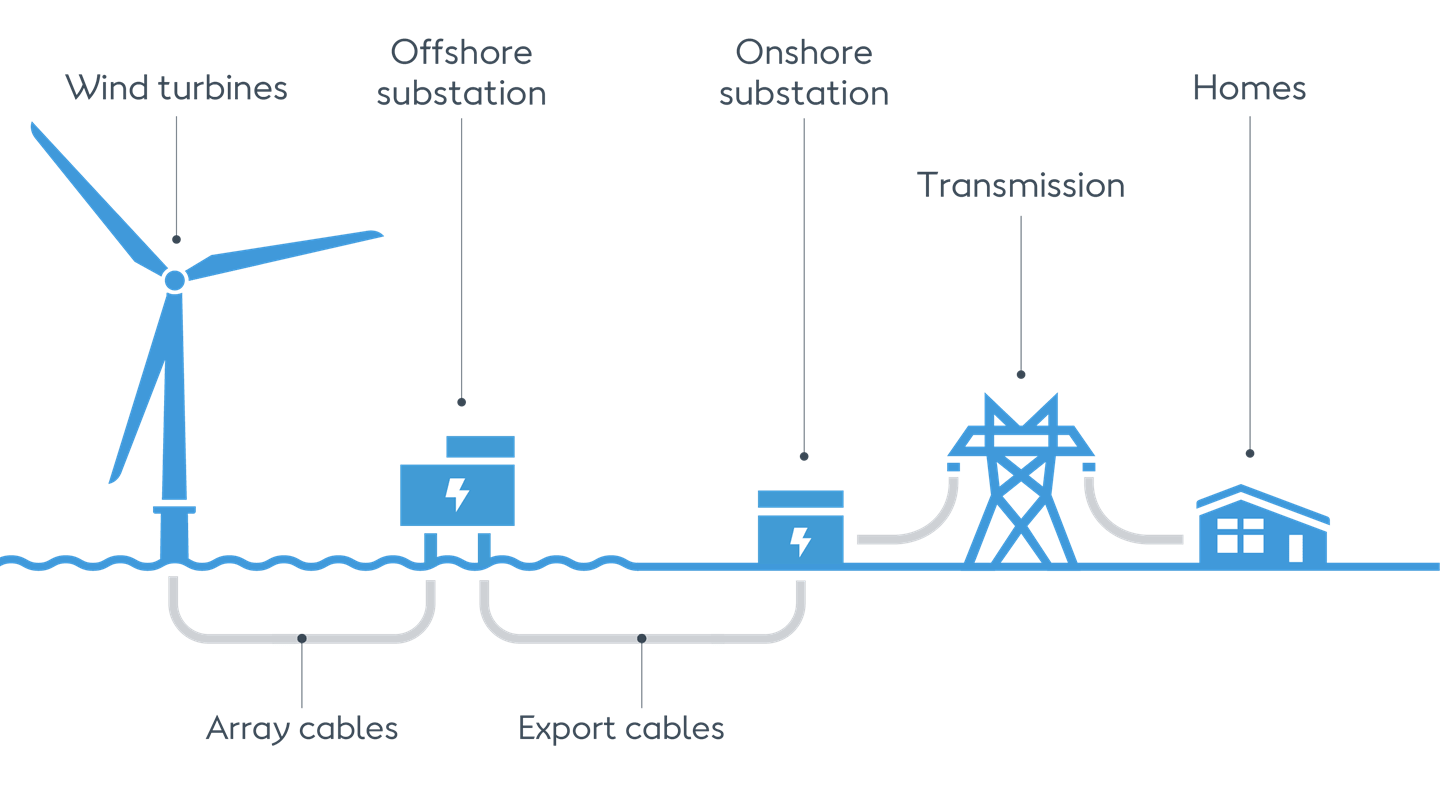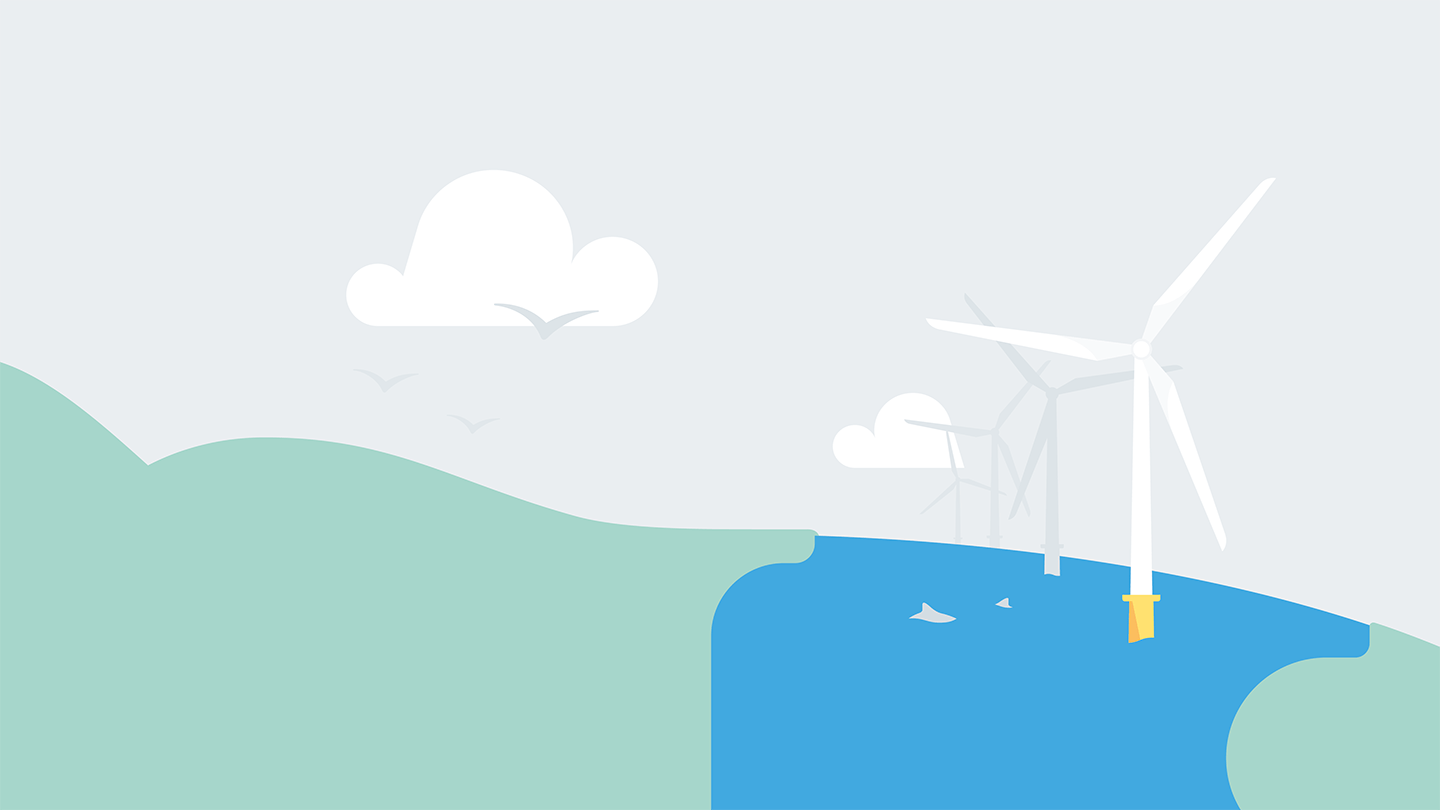Offshore wind power plays an indispensable role in the global green energy transition.
In just a few decades, offshore wind has gone from being an untested idea to a mature and competitive technology.
In Denmark, where Ørsted is headquartered, offshore wind power has reduced carbon emissions and developed a new industry that employs thousands of people throughout the country.
In 1991, we built the world’s first offshore wind farm, Vindeby, in the shallow waters of Lolland, Denmark. With eleven small wind turbines, this wind farm could power almost 2,200 households' energy consumption. Today’s turbines are significantly larger and more efficient. Just one turbine at one of our new wind farms can produce more electricity than the entire Vindeby wind farm could back then.
